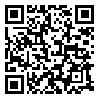Volume 19, Issue 1 (5-2024)
MGj 2024, 19(1): 11-24 |
Back to browse issues page
Download citation:
BibTeX | RIS | EndNote | Medlars | ProCite | Reference Manager | RefWorks
Send citation to:



BibTeX | RIS | EndNote | Medlars | ProCite | Reference Manager | RefWorks
Send citation to:
Dehghan M, Tohidfar M, ranaei Siadat S O, Askari H, Fatemi F, Sefidbakht Y. Effect of sodium alginate as alternative natural adjuvant on immunogenicity of Yeast-produced RBD-FC recombinant protein vaccine and molecular dynamics investigations. MGj 2024; 19 (1) : 2
URL: http://mg.genetics.ir/article-1-1800-en.html
URL: http://mg.genetics.ir/article-1-1800-en.html
Mahboobeh Dehghan 
 , Masoud Tohidfar *
, Masoud Tohidfar * 
 , Seyed omid Ranaei Siadat
, Seyed omid Ranaei Siadat 
 , Hossein Askari
, Hossein Askari 
 , Fataneh Fatemi
, Fataneh Fatemi 
 , Yahya Sefidbakht
, Yahya Sefidbakht 


 , Masoud Tohidfar *
, Masoud Tohidfar * 
 , Seyed omid Ranaei Siadat
, Seyed omid Ranaei Siadat 
 , Hossein Askari
, Hossein Askari 
 , Fataneh Fatemi
, Fataneh Fatemi 
 , Yahya Sefidbakht
, Yahya Sefidbakht 

Shahid beheshti university
Abstract: (1118 Views)
RBD plays a major role in causing SARS-COV-2 infection, because the entry of the virus into the host cell occurs by binding RBD to the receptor of angiotansin-converting enzyme 2(ACE2). RBD is also an important immunogenic candidate in the development of protein subunit vaccines. In this study, expression of recombinant RBD in Pichia pink yeast was done easily and at low cost. Recombinant RBD and adjuvants such as sodium alginate, alum and the combination of the two were tested in a mouse model in increasing the level of neutralizing antibodies and increase the stability of the vaccine. The results showed that the use of an alternative natural adjuvant system instead of alum adjuvant increases the immunogenicity of RBD antigen and its stability, so that RBD formulated with sodium alginate alone and RBD formulated with sodium alginate and alum showed higher antibody titer and stability compared to RBD formulated with alum alone. The increase in immunogenicity of RBD antigen with RBD:SA:AL formulation was determined by serological assays that included direct ELYSA and surrogate Virus Neutralization Test (sVNT). High levels of IgGs and neutralizing antibodies were shown in serum of mice immunized with the RBD:SA:AL formulation. Collectively, our results showed that sodium alginate is as an effective natural adjuvant compare with the alum adjuvant. In ,addition, according to the obtained results, the combination of sodium alginate and Alum is more effective than sodium alginate alone .In order to, visualize, RBD-FC vaccine structure, molecular dynamics simulation was done for RBD-FC with glycan and without glycan modification. The analysis of root mean square deviation (RMSD), radius of gyration (RG), and root mean square fluctuation (RMSF) showed that the construct has stable fold and suitable conformation due to the used linker.
Article number: 2
Keywords: Natural adjuvant, Receptor binding domain, Sodium alginate, Surrogate Virus Neutralization Test
Type of Study: Applicable |
Subject:
Subject 04
Received: 2022/12/26 | Accepted: 2023/08/23 | Published: 2024/08/25
Received: 2022/12/26 | Accepted: 2023/08/23 | Published: 2024/08/25
Send email to the article author
| Rights and permissions | |
 |
This work is licensed under a Creative Commons Attribution-NonCommercial 4.0 International License. |



